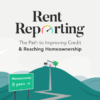How can you say objectively that a piece of property is a good investment? The easiest way is to compare how much it earns vs. how much it costs to maintain. If property costs more than it earns (or appreciates), we can say categorically that it is a bad investment; however, if it earns more than it costs, especially if you are able to recuperate your initial capital within a reasonable period of time, we can say with confidence that it is a good investment.
What Is Net Operating Income?
Real estate investors have come up with a useful figure called Net Operating Income (NOI). NOI is computed by subtracting all reasonably necessary operating expenses from total revenue (a.k.a. Gross Operating Income or GOI). The formula is as follows:
NOI = GOI – Total Operating Expenses
GOI accounts for every dollar of income you generate from the property. These include rent, parking fees, and other service fees generated from activities such as vending, housekeeping, and laundry.
Total Operating Expenses, on the other hand, refers to all costs associated with running and maintaining a property. These include management fees, taxes, utilities, repairs, insurance, and other maintenance fees. However, not part of Total Operating Expenses are capital expenditures, principal and interest payments on loans, amortization, and depreciation. In other words, costs not directly associated with the maintenance or operation of said property.
Knowing NOI is important because it tells property owners how much money they can earn before any debts or income taxes are incurred.
Net Operating Income vs. Net Operating Loss
To avoid confusion, think of the word “net” as “total”. Therefore, when we say Net Operating Income, this refers to the total income generated by a property minus all reasonably necessary operating expenses, as enumerated above.
Which brings us to Net Operating Loss (NOL).
When the Total Operating Expenses of a property exceed its GOI, we end up with a loss instead of an income. Hence, for these cases we use the term NOL.
It’s actually pretty simple. If GOI – Total Operating expenses is positive, we have a NOI; if it is negative, we end up with a NOL.
Who Uses It And Why?
Net Operating Income is generally used by real estate brokers, investors, banks, and other agents concerned with the valuation of a property. However, we believe that anyone looking to invest in real estate should understand it.
Whether you’re looking to purchase commercial real estate or buy your first family home, NOI can serve as a useful guide for determining the value of a property including its selling price, debt coverage ratio (DCR), and projected capitalization rate.
Understanding NOI can help you make more informed decisions, especially when you’re looking to buy and sell property on the open market.
How To Maximize Your Net Operating Income
There are two ways to maximize your NOI: either you (1) increase your rent and/or service fees or (2) limit your operating expenses.
Increasing your rent and/or service fees is easy in theory. All you need to do is raise your rates as soon as any existing contracts expire. However, in doing so, you run the risk of alienating existing tenants and/or potential buyers.
Limiting your operating expenses, on the other hand, is trickier but does not affect how buyers or renters perceive your property. It involves things like automating your back office, finding less expensive suppliers, cutting on labor costs, and other cost-saving activities.
Whichever method you choose, it is always important to keep the value of the property in mind. A good approach is to look at similar properties and how they price their rents and manage their respective operations.
Other Terms You Need To Know
Capitalization Rate
The Capitalization Rate (CR) is the projected return on investment (ROI) of a real estate property. This is computed by dividing NOI with the property’s current market value as follows:
Capitalization Rate = NOI / Current Market Value
CR tells investors how long it will take to recover their initial capital based on the property’s projected income.
Debt Service Coverage Ratio
Debt Service Coverage Ratio (CR) or Debt Coverage Ratio (DCR) is the measure of a borrower’s fitness to meet annual debt obligations. It is computed as follows:
DSCR = NOI / Total Debt Service
A ratio greater than 1 means that the borrowing entity has enough income to cover its debt (i.e. positive cash flow); whereas a ratio less than 1 means it does not (i.e. negative cash flow). For individual persons, DSCR is usually computed using personal income instead of NOI.
DSCR serves as a useful gauge by which real estate lenders can measure borrowers. Borrowers with a positive cash flow and a DSCR greater than 1 are far more likely to be able to be accepted for a loan than those with a DSCR less than 1. However, there are certain exceptions wherein a borrower has enough outside income to offset any negative cash flow associated with a property.
Non-Operating Income
Non-operating income, also called incidental or peripheral income, refers to any income unrelated to the core operations of a business or property. These can include earnings from dividends, stock investments, outside capitalization, and other irregular revenue streams.
Because non-operating income is irregular and non-recurring, it is usually excluded in the valuation of a property and the computation of NOI. In a similar manner, non-operating expenses (e.g. one-time renovations and repairs) are also not included in NOI, although both of these may affect the total capitalization of a property.
Conclusion
NOI can help you determine whether a property is worth purchasing, and whether it is undervalued or overvalued based on its current price. Furthermore, it allows you to gain a clear picture of your investment.[/vc_column_text][/vc_column][/vc_row]







